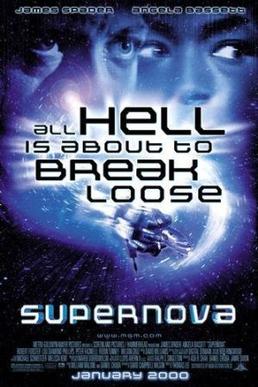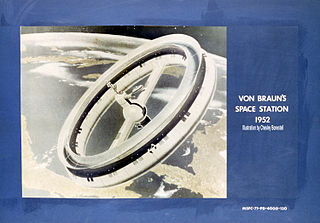
Silvie Tomčalová, known as Silvia Saint, is a Czech former pornographic actress. In 1996, she was Penthouse Pet of the Year in the Czech edition of the magazine. She has appeared in over 300 pornographic movies.
Private Media Group, Inc. is a Swedish production and distribution company that distributes adult entertainment via print publications, DVDs, the internet, and mobile.

A reduced-gravity aircraft is a type of fixed-wing aircraft that provides brief near-weightless environments for training astronauts, conducting research, and making gravity-free movie shots.

STS-87 was a Space Shuttle mission launched from Launch Complex 39B of the Kennedy Space Center on 19 November 1997. It was the 88th flight of the Space Shuttle and the 24th flight of Columbia. The mission goals were to conduct experiments using the United States Microgravity Payload (USMP-4), conduct two EVAs, and deploy the SPARTAN-201 experiment. This mission marked the first time an EVA was performed from Columbia. EVAs from Columbia were originally planned for STS-5 in 1982 and STS-80 in 1996, but were canceled due to spacesuit and airlock problems, respectively. It also marked the first EVA conducted by a Japanese astronaut, Takao Doi.

Zero Gravity Corporation is an American company based in Exploration Park, Florida, formerly of Fort Lauderdale, Florida, which operates weightless flights from United States airports. Zero-G is governed under Part 121 of FAA regulations enabling the company to cater to both tourists and researchers alike. Zero-G is operated by Everts Air Cargo who holds the 121 certificate.

Liam Paul Paris Howlett is an English record producer, musician, songwriter, co-founder and leader of the British electronic band the Prodigy.
In physics and materials science, a drop tower or drop tube is a structure used to produce a controlled period of weightlessness for an object under study. Air bags, polystyrene pellets, and magnetic or mechanical brakes are sometimes used to arrest the fall of the experimental payload. In other cases, high-speed impact with a substrate at the bottom of the tower is an intentional part of the experimental protocol.

Supernova is a 2000 science fiction action film written by David C. Wilson, William Malone and Daniel Chuba and directed by Walter Hill, credited as "Thomas Lee." "Thomas Lee" was chosen as a directorial pseudonym for release in lieu of Alan Smithee, as the latter had become too well known as a badge of a film being disowned by its makers. It was originally developed in 1988 by Malone as "Dead Star," with paintings by H. R. Giger and a plot that had been called "Hellraiser in outer space." Jack Sholder was hired for substantial uncredited reshoots, and Francis Ford Coppola was brought in for editing purposes. Various sources suggest that little of Hill's work remains in the theatrical cut of the film. The film shares several plot similarities with the film Event Horizon, released in 1997, and Alien Cargo, released in 1999. The cast features James Spader, Angela Bassett, Robert Forster, Lou Diamond Phillips, Peter Facinelli, Robin Tunney, and Wilson Cruz. The film was shot by cinematographer Lloyd Ahern II and scored by composers David C. Williams and Burkhard Dallwitz.
The conditions governing sex in space have become a necessary study due to plans for long-duration space missions, as well as the future potential accommodation of sexual partners aboard the International Space Station (ISS). Issues explored include disrupted circadian rhythms, radiation, isolation, stress, and the physical acts of intercourse in zero or minimal gravity.
Space art or astronomical art is a genre of art that focuses on the universe as a frame of reference. Like other genres, space art has many facets and encompasses Realism, Impressionism, Zoological art, abstract imagery, and the making of sculptures. Though artists have long produced art with astronomical elements, the genre of space art itself began only when technological advancement allowed for more detailed observation of the night sky. Space art also attempts to communicate ideas related to space, often including an artistic interpretation of cosmological phenomena and scientific discoveries. In some cases, space artists use more than illustration and painting to communicate astronomy or works depicting space. Several space artists some work directly with scientists developing spaceflight technology in attempts to expand the arts, humanities, and cultural expression relative to space exploration.

The 2suit is a garment designed to facilitate sex in weightless environments. It has been tested in microgravity during a parabolic flight.

A rotating wheel space station, also known as a von Braun wheel, is a concept for a hypothetical wheel-shaped space station. Originally proposed by Konstantin Tsiolkovsky in 1903, the idea was expanded by Herman Potočnik in 1929.
Frank Pietronigro is an American interdisciplinary artist, educator and author. He was the first artist to create "drift paintings", where his body floated within a three-dimensional painting that he created in zero gravity aboard NASA's KC135 aircraft. He is a former Associate Fellow at the Frank-Ratchye STUDIO for Creative Inquiry at the Carnegie Mellon College of Fine Arts.

Weightlessness is the complete or near-complete absence of the sensation of weight, i.e., zero apparent weight. It is also termed zero g-force, or zero-g or, incorrectly, zero gravity.
ELIPS - European Programme for Life and Physical Sciences in Space and applications utilising the International Space Station started in 2001 and was intended to cover the activities for the following 5 years. This Microgravity Programme at the European Space Agency (ESA) is an optional programme, with currently 17 ESA member states participating. The ELIPS programme prepares and performs research on the International Space Station, and other uncrewed mission platforms like Sounding Rockets, in fundamental and applied life and physical sciences. ELIPS is the continuation of the earlier European microgravity programmes EMIR 1&2, and the Microgravity Facilities for Columbus, MFC.

Neutral buoyancy simulation with astronauts immersed in a neutral buoyancy pool, in pressure suits, can help to prepare astronauts for the difficult task of working while outside a spacecraft in an apparently weightless environment.

Vladimir Pletser is Director of Space Training Operations at Blue Abyss since 2018, where he is in charge of developing astronaut training programs. From 2016 to early 2018, he was a Visiting Professor and Scientific Adviser at the Technology and Engineering Centre for Space Utilization (CSU) of the Chinese Academy of Sciences in Beijing, China. He supported the preparation of scientific experiments in microgravity for the Chinese Tiangong space station and for aircraft parabolic flights. He worked previously from 1985 till early 2016 as a senior Physicist Engineer at the European Space Research and Technology Centre (ESTEC) of ESA.

Vanna Marie Bonta was an American writer, actress, and inventor. She was of partial Italian descent. She wrote Flight: A Quantum Fiction Novel. As an actress, Bonta played "Zed's Queen" in The Beastmaster. She performed primarily as a voice talent on a roster of feature films, such as Disney's Beauty and the Beast, as well as on television. Bonta invented the 2suit, a flight garment designed to facilitate sex in microgravity environments of outerspace. The spacesuit was featured on The Universe television series, which followed Bonta into zero gravity to film an episode titled Sex in Space that aired in 2009 on the History Channel.

Made In Space, Inc., is an American company specializing in the engineering and manufacturing of three-dimensional printers for use in microgravity. Headquartered in Jacksonville, Florida, Made In Space's 3D printer was the first manufacturing device used in space.
"Upside Down & Inside Out" is a song by American rock band OK Go. It was released as a single from their fourth studio album, Hungry Ghosts.













